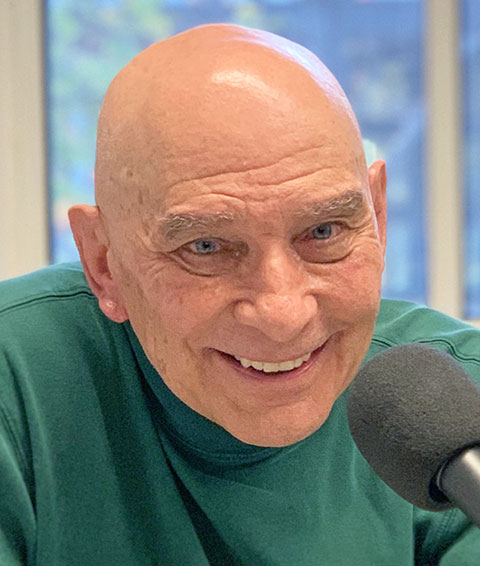
A Biography of G. William Domhoff
G. William Domhoff, who goes by "Bill," studied dream research with Calvin Hall at the University of Miami, where he received his Ph.D. in psychology in 1962. Before that, he attended Duke University in North Carolina and Kent State University in Ohio (M.A., 1959). He has been teaching at the University of California at Santa Cruz since 1965. In 1993 he was promoted to Distinguished Professor of Psychology; in 2007 he received the Constantine Panunzio Distinguished Emeriti Award, which honors the post-retirement contributions of UC faculty.
He has published numerous articles on dreams in academic journals, some as a co-author with Calvin Hall and others with Adam Schneider.
Bill's most recent book, The Neurocognitive Theory of Dreaming: The Where, How, When, What, and Why of Dreams, was published in October, 2022, by MIT Press. It builds on the most recent neuroimaging studies of the human brain (both waking and sleeping) to show that dreaming is based on many of the same specific neural substrates that support imagination and daydreaming during waking. These neural substrates are augmented by neural substrates that support mental imagery, which is usually more vivid and realistic during dreaming than during mind-wandering and daydreaming. That's because the outwardly focused brain networks are relatively deactivated during sleep.
Dreaming therefore can be described as a vivid form of imagination that is roaming freely through a person's memory bank of personal concerns related to the past, present, and future. It's unconstrained by the waking cognitive networks that deal with the daily barrage of incoming stimuli, instructions, and commands. More formally, dreaming is defined in the book as an intensive and enhanced form of mind-wandering and daydreaming in which dreamers experience themselves as being in hypothetical scenarios that almost always include other human beings and/or animals. And those other human beings are usually interacting with the dreamer in the context of vivid sensory environments. More information about The Neurocognitive Theory of Dreaming can be found here. There's also an online methodological appendix that focuses on what's necessary to do studies of dream content that have scientific value.
In addition to The Neurocognitive Theory of Dreaming, Bill has written four other books about dreams. In 2018, he published The Emergence of Dreaming: Mind-Wandering, Embodied Simulation, and the Default Network with Oxford University Press. It takes a more historical approach than his 2022 book in that it presents the findings from laboratory studies of dreams in greater detail than they had been in previous books by dream researchers. The book is also noteworthy for its detailed presentation of the parallels between the gradual development of dreaming and the equally gradual development of waking cognitive capacities, as painstakingly revealed by the developmental cognitive psychologists who studied waking cognitive development between the 1970s and 2015. But it's a bit out of date in terms of neuroimaging studies, and it doesn't discuss the surprising lack of alleged "symbolism" and emotions in dreams, which contradicts popular stereotypes about dreams. There's an overview of the book here on this web site, along with links to a news story about the book and a lecture related to it.
Bill's 2003 book on dreams was titled The Scientific Study of Dreams: Neural Networks, Cognitive Development, and Content Analysis. It presents an earlier version of his neurocognitive theory, before anything was known about the default network and its major overlap with REM sleep. It presented a full statement on the then-new DreamBank.net and how it could be used by one and all for research. It is also notable for the most detailed quantitative study of a very long dream series that had ever been carried out. (A PDF of the 2003 book can be downloaded here; the PDF does not differ in substance from the published version, which is now out of print.)
Bill's 1996 book, Finding Meaning in Dreams: A Quantitative Approach was the original basis for this Web site. It relies heavily on quantitative studies carried out by Hall between the 1940s and 1970s, and by Adam Schneider in the 1990s. The material in the book on cross-cultural findings (Chapter 6) is still the most comprehensive summary of a very important set of studies of dream content by anthropologists between the 1920s and early 1990s. The chapters on the consistency of dream content over years and decades (Chapter 7) and on the relationship between dreams and personal concerns (Chapter 8) still provide the most complete and detailed summaries of foundational studies of dream content. It’s necessary to know about these studies in order to understand just how solid the basis is for the generalizations about dream content in The Neurocognitive Theory of Dreaming. The complete text of Finding Meaning in Dreams is available on-line in the Dream Library on this Web site.
In 1985, Bill wrote a book called The Mystique of Dreams, which debunks the widespread belief that the Senoi people of highland Malaysia practice dream control and have extraordinary mental health. It shows through anthropological evidence that "Senoi dream theory" -- as Americans know it through best-selling pop psych dream books -- is really American "we-can-do-and-control-anything" ideology. The dream control myth was projected onto the Senoi by an American adventurer who happened on them accidently, didn't know the language, and spent only a few weeks with them. (An updated version of Mystique is available in this Web site.)
For a list of all of Bill's published works about dreams, click here.
 Go back to the "About us" page. Go back to the "About us" page.
|